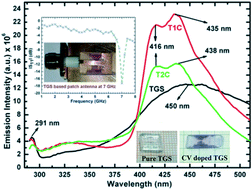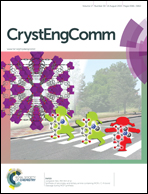Performance of crystal violet doped triglycine sulfate single crystals for optical and communication applications
Abstract
Single crystals of 0.01 and 0.02 mol% crystal violet dye doped triglycine sulfate (NH2CH2COOH)3·H2SO4 (TGS) have been grown by a slow evaporation technique. Enhanced dielectric, optical, thermal and mechanical properties have been achieved by dye doping. Monoclinic structures showing particular coloring patterns and morphology change with dye concentration were obtained. Various functional groups and dye incorporation in the grown crystals were confirmed qualitatively by FTIR and Raman analysis. A significant increase in Curie temperature from 50 to 55 °C with a decrease in maximum permittivity has been observed. The UV-vis spectra showed an increased transmittance window and an increased optical band gap from 5.61 to 6.11 eV as a result of doping. An increase in the sharpness and intensity of the photoluminescence peak with a blue shift has been observed in doped crystals. The thermal stability and the decomposition temperature were found to increase by about 10 °C in 0.01 mol% dye doped TGS. The mechanical strength of the grown crystals was estimated by the Vickers microhardness test and was found to be high for dye doped TGS. A high piezoelectric charge coefficient d33 of 16 pC N−1 was observed for pure TGS which decreased as a result of the dye effect. The fabrication of a patch antenna was carried out after simulating its resonant frequency, making it suitable for telecommunication applications.


 Please wait while we load your content...
Please wait while we load your content...